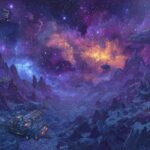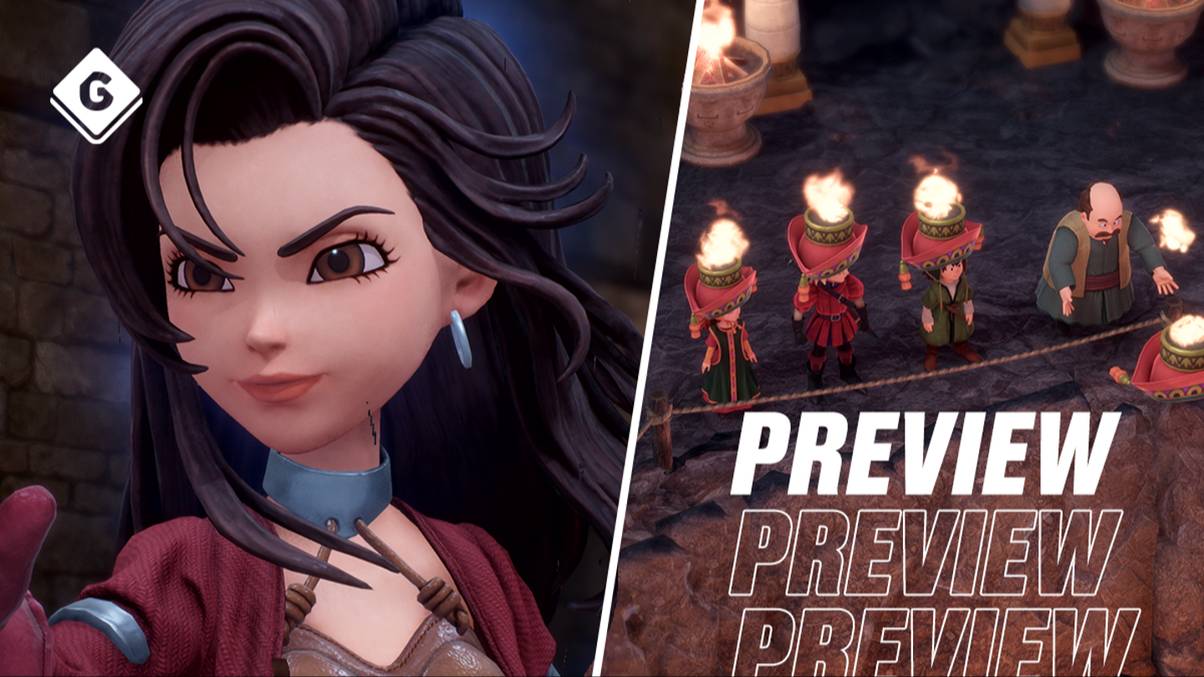
It has been 25 years since the original Dragon Quest VII: Fragments of the Forgotten Past debuted on PlayStation, so the arrival of a very ambitious ground-up remake only feels appropriate. Developers Square Enix and HEXADRIVE Inc. have chosen to dub this edition Dragon Quest VII Reimagined, and there’s a lot more behind that name than simple rebranding and a standard refresh.
The scope of this latest effort is difficult to overstate. We got to spend a couple of hours with the game and chat to producer Takeshi Ichikawa about the process, and it looks as though the title is toeing the perfect line between staying faithful to the original and removing the more archaic elements that may have proven jarring to the modern player in 2025.
In broad strokes, Reimagined brings greatly improved visuals (with an entirely new, hand-drawn diorama art style), a streamlined main story, and deeper mechanics. Bearing all of that in mind, looking at the game at the macro level really doesn’t do it justice; it really does make the whole package very easy to appreciate if you look at each element in detail.
A Timely Return

So why Dragon Quest VII, and why now? Well, whilst the anniversary was a consideration, there was a fair bit more to it than that, as Ichikawa explained to me.
“Yes, obviously, this is 25 years since the original DQVII came out. It’s a good time now for the game, but I just felt that the unique story and the unique atmosphere it has made it a really good fit with the modern day and what modern gamers are looking for,” he said.
“In the story, there’s an unfairness, there’s an oppression and themes like that which are touched on in the story. It felt like it was a really good fit for bringing to the modern gamer.”
To kick things off, with the general gameplay loop, you’ll spend the game exploring different zones and taking part in turn-based battles against both normal enemies and considerably more difficult bosses. You’ll engage in plenty of dialogue with the game’s charming NPCs, and level up your party to turn them into lean, mean enemy-killing machines.
Battles Are Greatly Improved
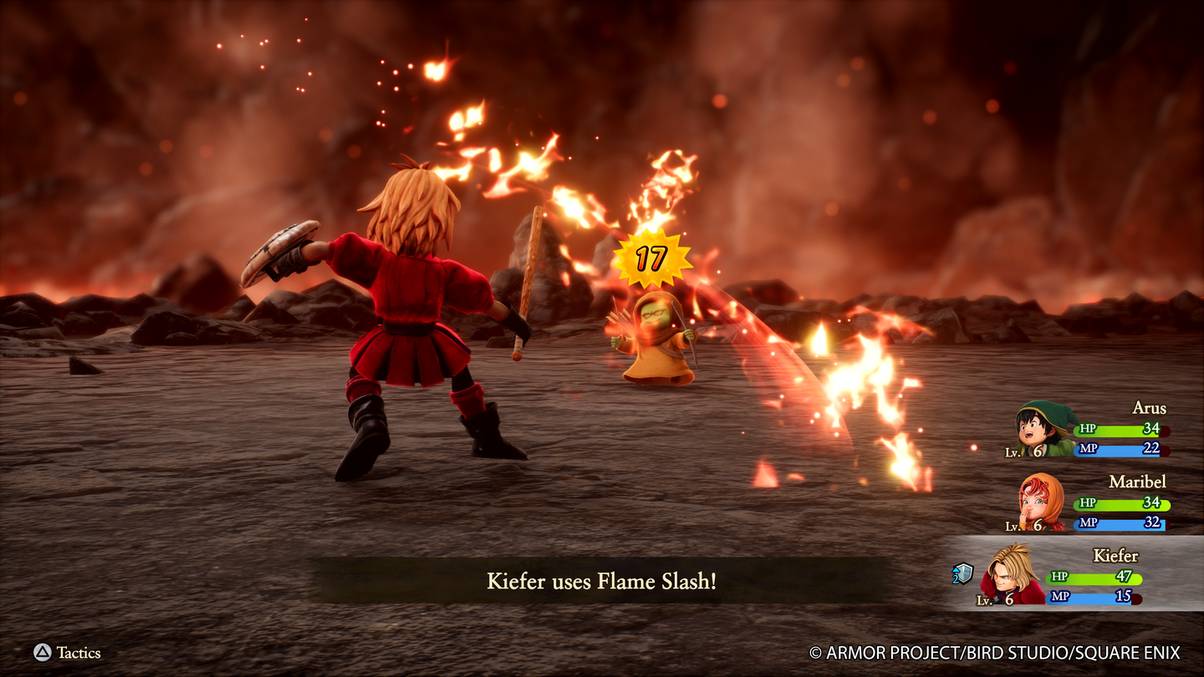
The game’s battle systems have been improved significantly, with streamlined pacing and the ability to speed up combat. Dragon Quest VII could easily have been at its weakest when you’re having to slog through battle after battle against trash-level enemies who you can kill easily, so numerous as to be annoying. It seems like the developer is well aware of this, and there are plenty of ways to make this process as easy as possible, like the aforementioned battle speed and even an auto-battler if you really don’t want to engage with combat (though I didn’t use this, so can’t attest to its quality here).
Boss battles also really come across as set-piece moments, where your characters are locked in a struggle that could see them all snuffed out. There were several times that things were seemingly going very smoothly, before one misplay on my part or a huge attack from my foe almost wiped everyone out in one fell swoop. These battles improve as you progress as well, with room for much more strategy on the players part as you get access to more characters and abilities.
One of the big systems you will need to take advantage of this time around, if you want to beat the more difficult foes, is vocations which essentially function as a pseudo-class system. You can have two vocations at the same time thanks to the new “Moonlighting” feature. Though my own exposure to this was limited in the brief playthrough, Ichikawa detailed why the new system has been implemented and what it means for the toughest battles in the game.
“Yes, there are two main reasons we wanted to include these mechanics. The first one comes from giving the player more freedom so they can enjoy battles in their own way and have much more freedom in customising how they want their characters,” Ichikawa confirmed.
“The other reason was to kind of address something that we found a problem among players in the previous versions of the game. When you only had one job available, what we often saw was players would pick their favorite job, they’d level up that job, then when they got that job to the maximum level, they would then get the option, ‘Okay, you can now start a new job and you can start that one from scratch again,’ but there was quite a dilemma there because it meant that you actually had to go down in power and you had to start from scratch again, which made people a bit hesitant to do so.”
He continued, “Of course, now you’ve got the option to have two jobs at once. You can keep one of them as your previous stronger job while trying something new, and then you don’t have to drop down the power so much. It makes it much easier to switch and just to try out different jobs more casually, which is what we wanted to achieve there.”
Visually Clear and Dynamic
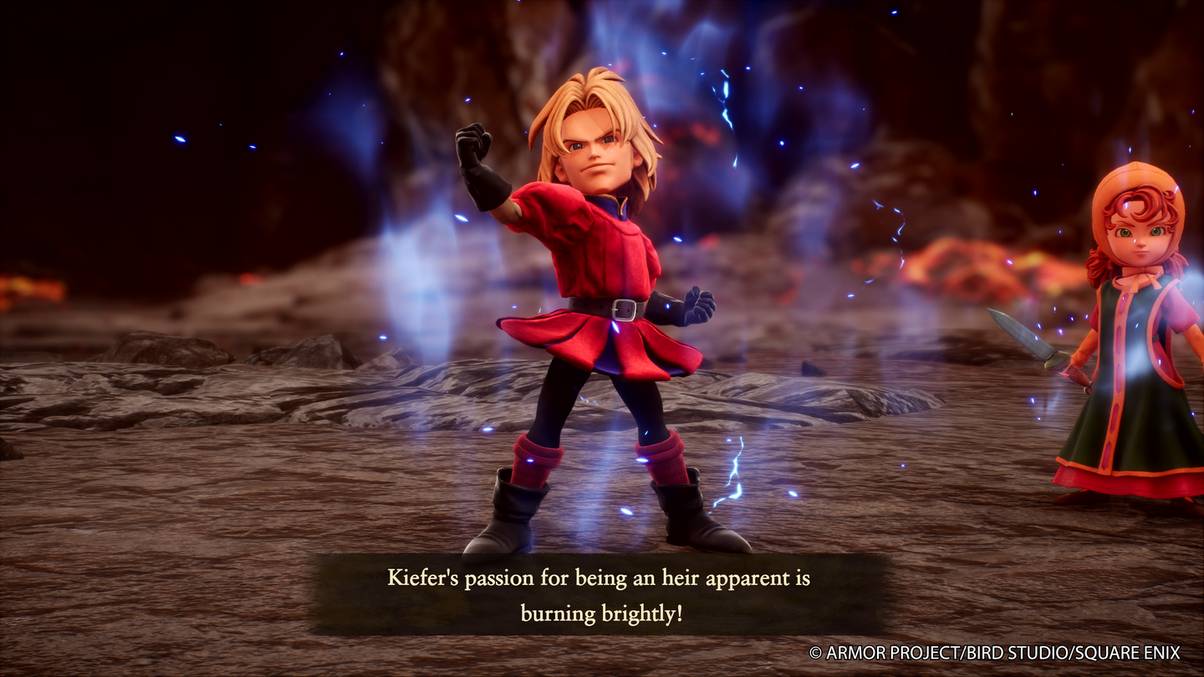
This is also a good time to talk about the new art direction for the game, and how it has translated across to this latest effort. You could easily be forgiven for feeling some trepidation when it became clear that the new game had a whole new aesthetic to go with it. The original art was created by legendary Dragon Ball creator Akira Toriyama, and the art team behind this project had to make sure this latest effort was a fitting tribute to that origin. Happily, it very much is, and feels at home both in the Dragon Quest universe and as a modern video game offering.
That’s no accident, as Ichikawa explained: “That was a very big concern obviously. Right from the start when we were actually putting together the real 3D models for the characters, within the real world, we very much checked those against the original design document that Mr. Toriyama drew up. We checked all of those character illustrations to make sure that they were exactly perfect and really fit with the original images before we then went on to do what we did with scanning them in and turning them into in-game models.”
It also makes it very clear what is going on during battles, with status effects and other counters needing to be tracked to make sure you come out on top. Every character has their own unique style and theme, and there’s a ton of variety all held together by a very cohesive overall theme.
Ichikawa explained some of the work that went into this design process, saying, “First of all, we really wanted to focus on the idea of making it easier to play and more accessible. So you can get into the battles and they’re just easier to get involved in and don’t drag so much. Then, obviously, once we’ve worked out what we wanted to do in terms of those changes, those improvements, we made sure that it fitted with the new unique visual style after that. The mechanics and what we want to achieve on the gameplay side came first.”
Plenty to Like About the Narrative Changes
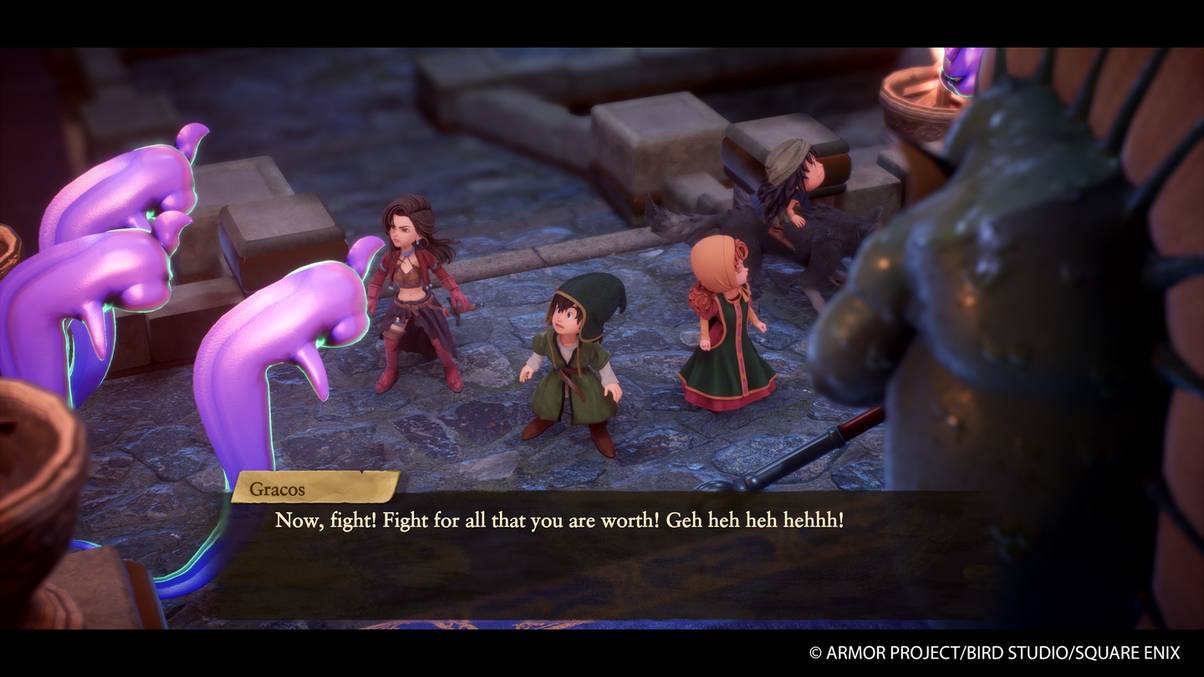
To move on to the story (and bear in mind there are some spoilers ahead here if you didn’t play it the first time around), the preview allowed us to take a look at two points in the game that did feature in the original, Emberdale and Wetlock. The former is a small town in the shadow of an enormous volcano called Burnmont. After a local clairvoyant predicts that the volcano will erupt, killing everyone in the town, it’s up to you and your party to find out what’s going on and stop it.
In Wetlock, it’s similarly doom-heavy, only this time, you don’t have time to do anything about it. After a mysterious musician appears in the town, the townspeople are removed via portals, leading the player to believe they’ve been kidnapped. What’s actually happened is that the bard had seen an enormous flood in the town’s future and he didn’t have the time to warn everyone, so he just took them, saving their lives in the process.
They’re both tight story beats with fun dialogue and no inane filler. Each time, it felt like we were pressing towards moments with genuine stakes, with both stories having satisfying and genuinely challenging boss fights at their conclusions. Again, that’s no coincidence, with the development team cutting parts of the story that slowed the pace of the game down, whilst introducing new pieces of content here and there that actively contribute to telling the main story.
I asked Ichikawa to explain how they decided which parts to cut, as well as the genesis of any new ideas they introduced.
“We looked at Dragon Quest VII and we were remaking, reimagining the game. Building it from scratch essentially. What do we feel that the game will need? What hasn’t it got now that it would need? So in that sense, we thought, from a blank slate really, ‘What do we need to add to the game? What would make it better?’ And that’s where the origin of a lot of those pieces came from.”
We’ll have to get our hands on the full game to find out how brutal developers have been in cutting the less engaging content, but it’s a very encouraging overall direction for the release. Dragon Quest VII Reimagined is, after all, an RPG, and the story is a big part of its overall success, so it’s nice to see so much attention paid to it considering it is a remake and they could easily have just left it as is.
At this early stage, there is a hell of a lot to like about Dragon Quest VII Reimagined, and if the full release can carry on the gameplay experience I had over those couple of previewed hours, then Square Enix is absolutely onto a winner. Combat is tactical and rewarding, the story is engaging, and the game looks genuinely fantastic. As a list of ingredients, it’s pretty compelling, so let’s just hope the final product combines them as seamlessly as the preview does.
Dragon Quest VII Reimagined launches on 5 February 2026 on PlayStation 5 (version previewed), Nintendo Switch 1 & 2, Xbox Series X/S, and PC.


